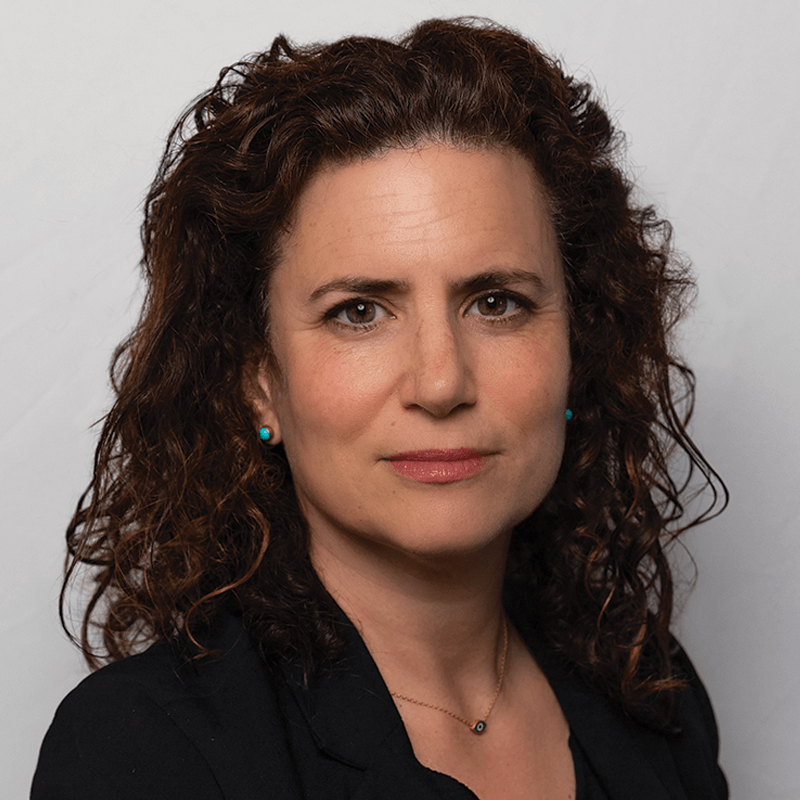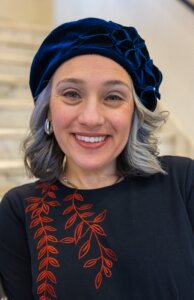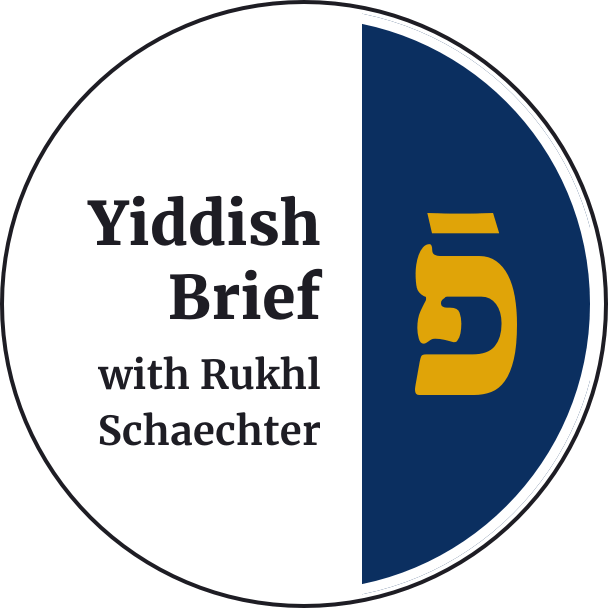Photo by picryl
Many Yiddish children’s stories about the Holocaust are set during the Warsaw Ghetto Uprising and depict children in heroic, albeit non-combatant roles. But most children who survived the Holocaust did so by fleeing Nazi-controlled areas or going into hiding, often under the care or protection of non-Jews. Yiddish children’s fiction published in North and South America after the war tended to fuse recent historical events with the eternal cycle of the Jewish holidays.
Zina Rabinowitz’s story “Elijah the Prophet — 1945” forms part of her 1958 collection, Der liber yontef (“The Precious Holidays”), which she published in New York. (Before the Holocaust, most children’s literature was published in Europe.) Portraying a group of Jewish children hiding on the French-Belgian border with a Jewish teacher and aided by a Catholic priest, the tale confronts the challenges faced by a diverse group of young people who have been separated from their parents and thrown together as a group.
Could the events Rabinowitz recounts have actually happened? It seems unlikely and would require some research to determine — although the name given to the story’s US Army chaplain, Rabbi Isadore Caplan, does correspond to a figure whose identity is attested to in the online American Air Museum.
What is certain is the rhetorical and emotional power of the tropes the story brings to life: the determination to nurture the community’s children even in the absence of the nuclear family; the deeply etched memory of the Haggadah’s best-known songs and phrases, and the Seder night’s promised passage from darkness to light, from captivity to liberation. Speaking in language that even a determined rationalist can appreciate, the story nevertheless presents a miracle in modern form.
Elijah the Prophet — 1945
by Zina Rabinowitz
Deep in a wine cellar, in a small border town between France and Belgium, in the year 1945, a group of Jewish children and their teacher lay in hiding. The town’s Catholic priest had hidden them separately from their parents. He imagined that if the Germans found them alone, they wouldn’t have the heart to kill off just children.
So the parents and other adults lay in a cellar at one end of town, while the children and their teacher in another, in a damp dark wine cellar.
When it started going badly for the Germans, and the Allies had carpet-bombed the entire front, the Gestapo’s search raids grew more intense. Everyone was terrified. The teacher who was hiding with the children feared not so much for himself as for them. Deep in his heart, he prayed to God to protect the children from suffering and torture, and above all, from fear. Because every time their childish eyes filled up with fear and the children clung to him, his heart would break. He prayed to God to give him courage, to strengthen him in the midst of great sorrow, that he not panic, and to give him the strength to encourage the children and save them.
But how could he occupy the children in a dark cellar? There were no books and nothing to write or draw with, nor was there anything to eat. So the teacher kept on telling stories, and then the children would retell them. That’s how they passed the time and forgot their troubles as best they could.
It was the afternoon before Passover. The teacher had a lot to tell them about the Exodus from Egypt. He compared their present situation to the one from back then, and in that way, he gave the children hope.
“Before the Jews left Egypt they also believed that the end was near, that they would never again see their children who had been dragged off in iron chains, to every corner of the land. But when the redemption came, parents and children found each other in the desert.
The children cheered up, and sensing this, the teacher told them one story after another. He also spoke about Elijah the Prophet: “Just when it looks like nothing can help, Elijah comes with his miracles and shows us that God is there for us; no need to despair.” And the children breathed easier..
“There’s no Elijah the Prophet!” cried Willy, who had been raised by wealthy German-Jewish parents. “Don’t tell us fairy tales! My mother taught me to believe only in facts, true facts!”
At just that moment, the door of the wine cellar opened. But instead of the priest who usually brought them a bite to eat each day, a small detachment of German police stood there, with clanking spurs.
“A Jewish hiding place!” bellowed the Gestapo men. “How many of you are here? Who hid you here? Out with the truth, dirty Jew!” Their slaps resounded on the teacher’s cheeks. “You’re not talking? We’ll get you talking soon enough when we return!! Believe me: not a trace of you will remain!”
The Germans locked and bolted the cellar from the outside, leaving the teacher and the children inside.
The children were so frightened that their teacher himself nearly panicked. But he knew that he didn’t have the luxury of panicking and continued speaking softly to the children“Now where were we?” he smiled. “Oh yes, Elijah! The cup of wine that Jews put on the table for him, because we believe that he will come on the Seder night to take a sip.”
“I don’t want to hear about your Elijah!” Willy burst out. “The Gestapo is about to come and get us, and you’re telling us stories.”
“Velvele!”
The teacher ran to embrace Willy who was running to the door. “I don’t want to die here! I want to go to my Mama!” Willy cried.
The children began quietly sobbing. The teacher managed to calm Willy down, cuddling him like a small child. The teacher’s cheeks were still aflame from the slaps he’d gotten from the storm troopers, and in his heart he continued to pray for wisdom and the courage to keep the children calm.
“Attention, my dear that today is the fourteenth of Nissan! Passover Eve! So let’s sit down to the Seder!”
And before the children had time to let out a sound, he intoned in a deep voice, “Do you understand, children? Everything in the world is not what you see, but what you imagine! Sit down around me, close your eyes, and imagine that you can see what I say to you! Picture a long table covered by a snow-white tablecloth. You see the karpas vegetables and the matzos? The cups of wine? So let’s start the Seder. Yankele! Make kiddush together with me… surely you see the first of the four cups?
The teacher made the Passover kiddush blessing, and Yankele repeated it word for word.
“Now let’s all recite ‘ha lachma,’ — ‘this is the poor bread that our ancestors ate in Egypt.”
The children repeated after him.
“And now Khanele, who’s the youngest here, will ask the Four Questions.”
Little Hannah asked the Four Questions.
“And now, I’ll answer the Four Questions and recite for you by heart what I remember of the Haggadah.”
“And afterwards, will we eat like at a real Seder?” one child asked.
“Certainly!” answered the teacher. “We’re going to have the finest delicacies, if you listen to me and picture what I describe to you.”
“Even matzoh ball soup?” asked a child probably suffering terrible hunger pangs.
“And an egg dipped in saltwater?” asked another.
“I like potatoes in saltwater.”
“We’re going to have everything! This will be a Seder to top all Seders! But we don’t eat matzoh balls before we start reading the Haggadah! Close your eyes and listen closely, and I’ll ‘read’ the Haggadah to you!”
And the teacher began reciting by heart whatever he remembered, and singing the Passover tunes.
He sang as if it were his last prayer. He prayed for the children to fall asleep and not to feel the fear of death. He sang in a sweet voice, and all the children fell asleep. With their eyes closed, they imagined the most beautiful Seder together with their parents, many of whom had already passed into the next world.
For a long time, a deep stillness reigned over the wine cellar.
All at once, he caught the sound of someone poking around by the locked door. The teacher said his last prayer: “God! If Elijah the Prophet exists,” bring him here to the Seder that we just had; may he himself bring You the souls of these innocent children. See, that the children don’t wake up now, that their bright eyes don’t see the evil murderers.”
Suddenly, he heard the voice of the priest calling him. The priest opened the door and stood there holding a candle.
“Why are you all so quiet? Are you praying?” he asked the teacher. “If so, it looks like your praying worked. The Americans have just entered the city. Let me introduce you to the chaplain, the rabbi, of the U.S. Army — Isadore Caplan.”
The teacher stood frozen. He couldn’t even answer. But he recovered quickly and burst out sobbing.
When the children heard the teacher’s crying, they all started to cry too.
The teacher turned to them and, smiling broadly, told them that a miracle had occurred, a great miracle.
“We’re free, freed from the German murderers. We prayed for Elijah the Prophet to come, and he did!” the teacher exclaimed, pointing to the rabbi from the U.S. Army, who brought matzah and Passover foods for everyone!”
“But before we leave this cellar, children, I want to introduce Chaplain Isadore Caplan to one of our boys!”
The teacher pointed to Willy and said, “His name is Velvele, but he wants to be called Willy or Wilhelm.”
“And so, Velevele-Willy-Wilhelm, who doesn’t believe in miracles or in fairy tales! Meet our Elijah the Prophet! Shake hands with the chaplain and tell him that from now on, you’ll believe that Elijah the Prophet truly does exist.”

I hope you appreciated this article. Before you go, I’d like to ask you to please support the Forward’s award-winning, nonprofit journalism during this critical time.
At a time when other newsrooms are closing or cutting back, the Forward has removed its paywall and invested additional resources to report on the ground from Israel and around the U.S. on the impact of the war, rising antisemitism and polarized discourse.
Readers like you make it all possible. Support our work by becoming a Forward Member and connect with our journalism and your community.
— Rachel Fishman Feddersen, Publisher and CEO

